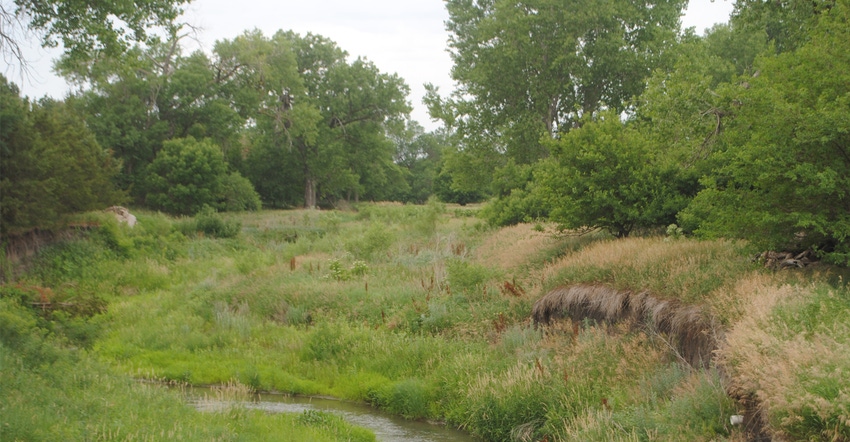
It sounds like a very technical term, and perhaps it is, but the term “riparian forest buffer” is straightforward as far as environmental implications on your farming operation.
In the natural state of North America, before modern settlement and expansion over the past three centuries, woodlands and forestland hugged lakes and waterways across the continent. These “riparian” areas included trees, shrubs, grass and native plants.
It was the natural state of things, and the way nature protected waterway and lake banks from extreme weather events, and offered shelter and food to wildlife near a water source.
In the past century, much of our country’s riparian forest areas located in agricultural production regions have been tilled for cropland, to make room for irrigation and farming equipment. Just a few decades ago, it wasn’t uncommon to see crops planted right up to the bank of a stream or river, without any vegetation to speak of separating the waterway from the cropland.
But awareness of the benefits of riparian forest buffers has been raised in more recent years, so the riparian areas are making a comeback — especially as we come to understand the potent benefits of these vegetative areas. Landowners are reestablishing riparian areas more and more. The USDA National Agroforestry Center offers guidance on the benefits of these buffers.
Water quality
These riparian forest buffers slow down floodwaters, USDA says, and cut down on the erosive power and debris from flooding events. The roots from the buffer plantings hold waterway banks in place, preventing erosion, but they also trap erosion sediment, absorb runoff nutrients and other contaminants, and help to increase water infiltration in the soil, which further prevents flooding.
Most landowners care deeply about wildlife on their farmland, so woody plants in riparian areas create habitat diversity, USDA says, and offers shade for streams and increased food, shelter and a safe haven for all kinds of wildlife — including pollinators, songbirds and salamanders.
Some producers are even able to garner income from riparian areas, leasing these areas for hunting and trapping, or harvesting nuts, berries, craft materials or even biomass from the land.
Design and management
To help design a riparian buffer area on your land, you need to decide the objectives of the project. What are the major needs for the area? What are the multiple functions you hope to accomplish through riparian plantings? What will be your management plan once the area is in place?
Answering these questions will help a landowner decide on what type of vegetation to plant and maintain. Woody rows of trees and shrubs serve multiple purposes for wildlife habitat, potentially to produce nuts and berries or wood for florals or crafts, and help to maintain bank stabilization and nutrient and runoff prevention.
Studies have shown that trees can be established successfully by planting tree seeds into current vegetation, but it takes planning, the right equipment and some management.
The width of the buffer, USDA says, may vary along its length, depending on the site conditions and goals for the buffer itself. But there are levels of management needed once the buffer is established.
Weed and pest control, damage repair from floods or storms, and harvesting of farm products from the land are things that will need to be monitored and managed. In many cases, there are cost-share programs that are available from various federal and state agencies to help in the planning, planting and maintenance of riparian areas.
No matter the design, location or management goals, riparian areas are crucial to the overall environment in ag production lands, and they offer multiple benefits to farmers and to the environment when they are properly established and maintained.
Learn more at unl.edu.
About the Author(s)
You May Also Like






